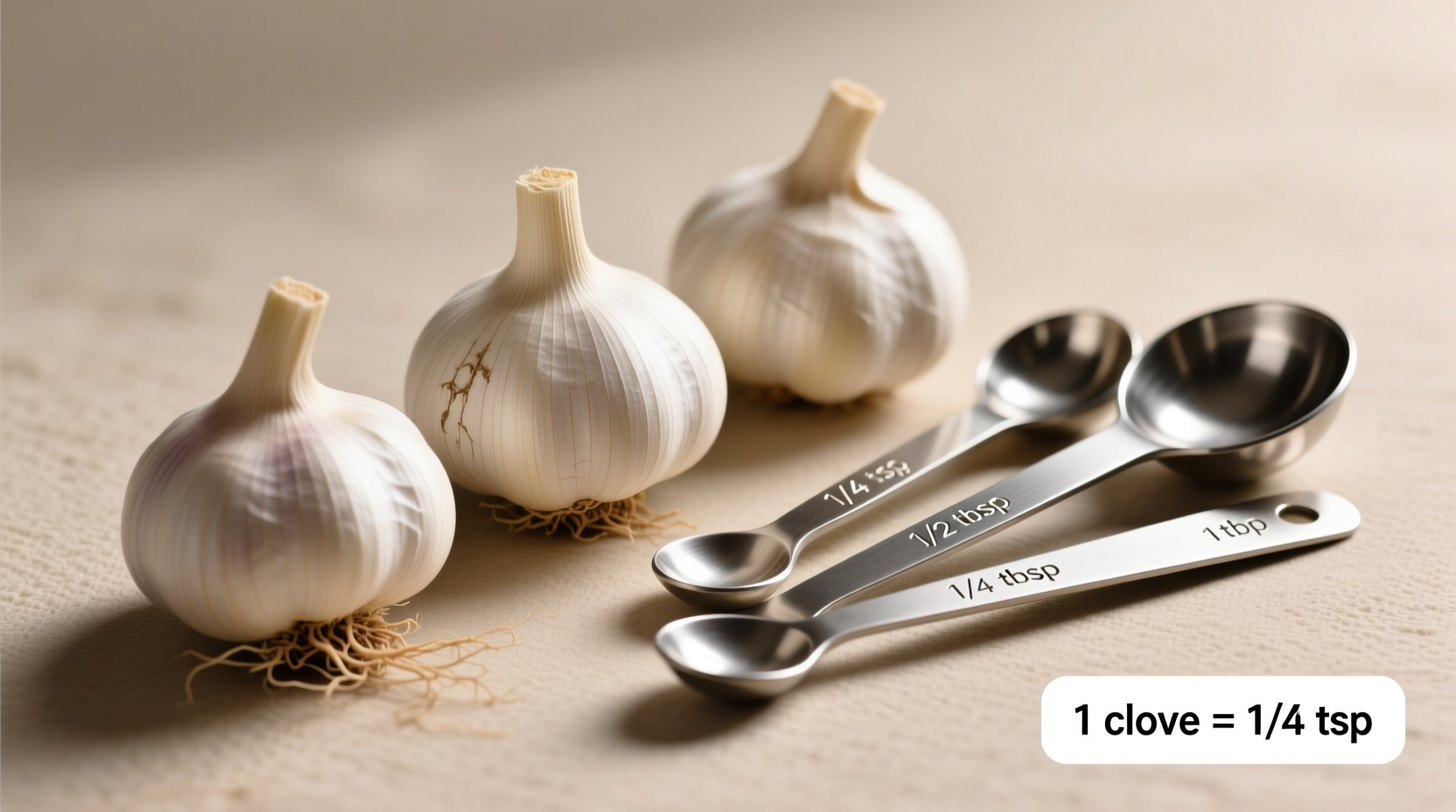Ever stood in your kitchen mid-recipe, wondering how to convert those garlic cloves to tablespoons? You're not alone. Getting garlic measurements right separates good cooking from great cooking. As a professional chef who's worked with garlic in countless kitchens, I've seen how this simple conversion trips up even experienced home cooks.
Why Garlic Measurement Accuracy Matters
Garlic's potent flavor means even small measurement errors can make or break a dish. Too little leaves your sauce flat; too much overwhelms other ingredients. The USDA's FoodData Central confirms that garlic's allicin content—which creates its distinctive flavor—varies significantly based on preparation method and quantity used.
The Standard Garlic Conversion Guide
While garlic clove sizes vary, culinary professionals use standardized measurements for consistency. Here's what you need to know:
| Garlic Form | 1 Clove Equivalent | 4 Cloves Equivalent |
|---|---|---|
| Whole, unpeeled | N/A | N/A |
| Peeled, whole | 0.5 inch diameter | 2 inches diameter |
| Minced | 1/2 teaspoon | 2 teaspoons (1.33 tablespoons) |
| Pressed | 1/2 teaspoon | 2 teaspoons (1.33 tablespoons) |
| Chopped | 3/4 teaspoon | 1 tablespoon |

Factors That Change Your Measurement
Several variables affect your garlic-to-tablespoon conversion:
Clove Size Variations
Garlic comes in multiple sizes. According to the University of California Agriculture and Natural Resources, a single bulb can contain cloves ranging from 0.25 to 1.5 inches in diameter. This means:
- Small cloves (0.25-0.5 inches): 4 cloves ≈ 1 tablespoon minced
- Medium cloves (0.5-0.75 inches): 4 cloves ≈ 1.33 tablespoons minced
- Large cloves (0.75-1.5 inches): 4 cloves ≈ 2 tablespoons minced
Preparation Method Matters
How you prepare garlic changes volume significantly. The Culinary Institute of America's research shows that finely minced garlic packs more densely than roughly chopped. For precise measurements:
- Minced garlic: Press firmly into measuring spoon
- Chopped garlic: Lightly fill spoon without packing
- Garlic paste: Measure after pressing through a press
Practical Kitchen Applications
Understanding how many tablespoons is four cloves of garlic becomes crucial in these common scenarios:
When Recipe Scaling
When doubling or halving recipes, convert garlic measurements first. Professional chefs at America's Test Kitchen found that garlic flavor compounds don't scale linearly—meaning doubling garlic doesn't simply double the flavor intensity.
Substitution Situations
Out of fresh garlic? Here's how to substitute:
- Garlic powder: 1/8 teaspoon per clove (4 cloves = 1/2 teaspoon)
- Garlic salt: 1/4 teaspoon per clove (4 cloves = 1 teaspoon)
- Bottled minced garlic: 1:1 ratio with fresh minced
Pro Tips for Perfect Garlic Measurements
After years in professional kitchens, here are my top recommendations:
The Water Displacement Method
For absolute precision, use water displacement: Fill a liquid measuring cup with 1/4 cup water, add your minced garlic, and measure the difference. This technique, recommended by Food Network's test kitchen, accounts for air pockets in minced garlic.
When to Adjust Measurements
Consider these factors before measuring:
- Recipe cooking time: Longer cooking reduces garlic's potency
- Dish acidity: Tomatoes and citrus mellow garlic flavor
- Other strong flavors: Anchovies or capers can balance extra garlic
Storing Pre-Measured Garlic
Pre-mincing garlic saves time but affects flavor. According to research published in the Journal of Agricultural and Food Chemistry, minced garlic's flavor compounds begin changing within 10 minutes of preparation. For best results:
- Store in airtight container with olive oil
- Use within 24 hours for optimal flavor
- Freeze in ice cube trays for longer storage











 浙公网安备
33010002000092号
浙公网安备
33010002000092号 浙B2-20120091-4
浙B2-20120091-4